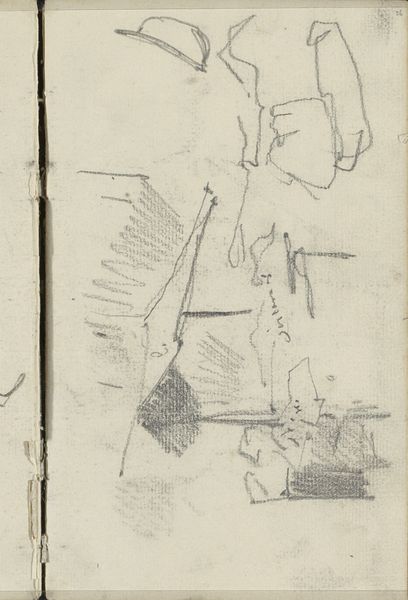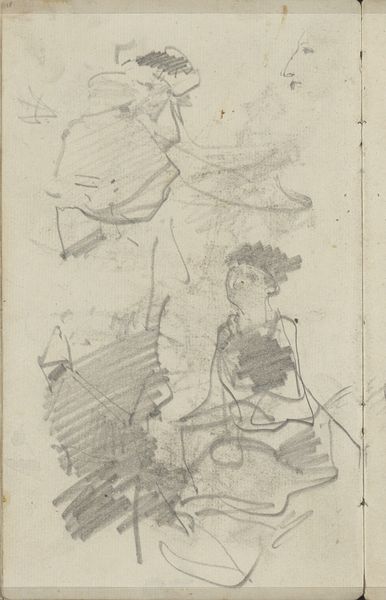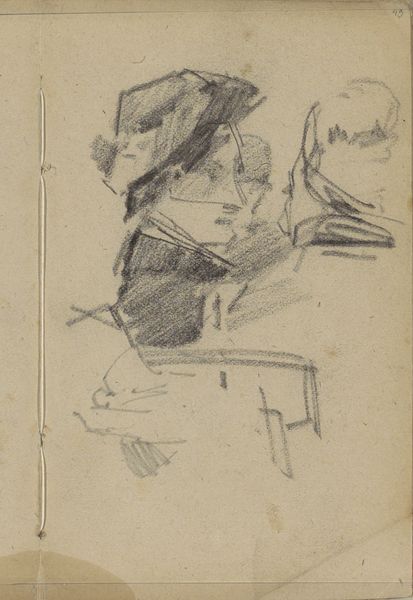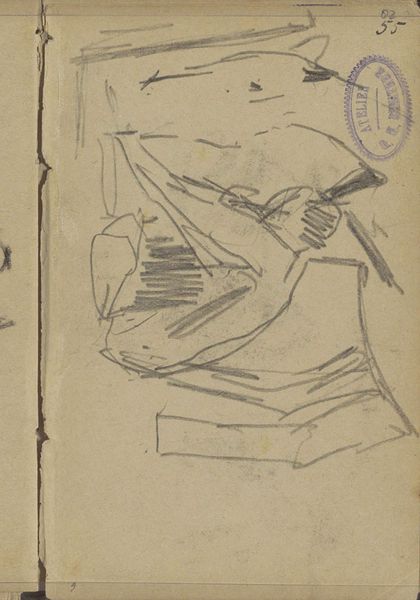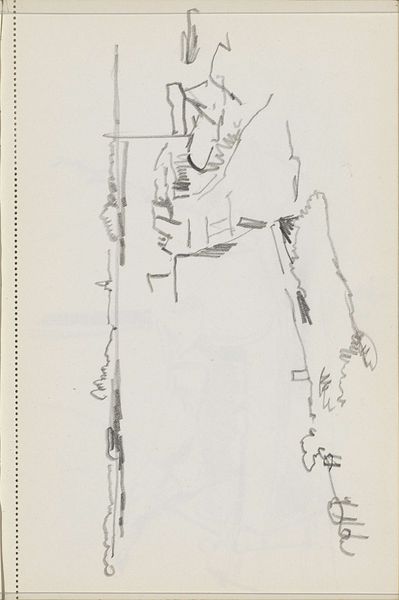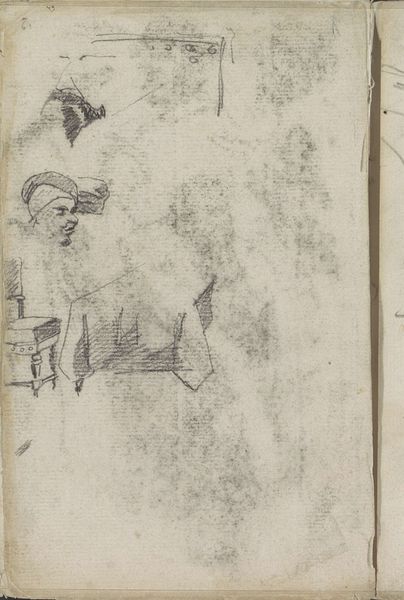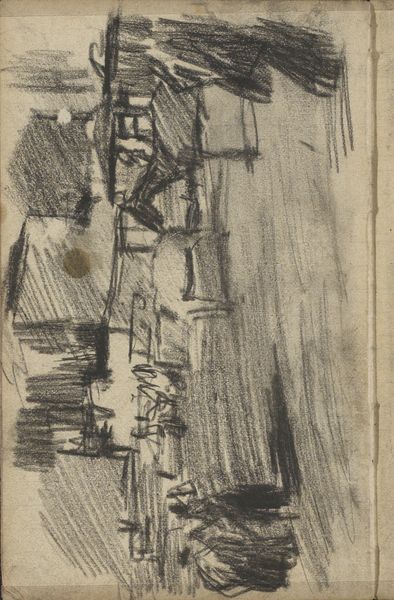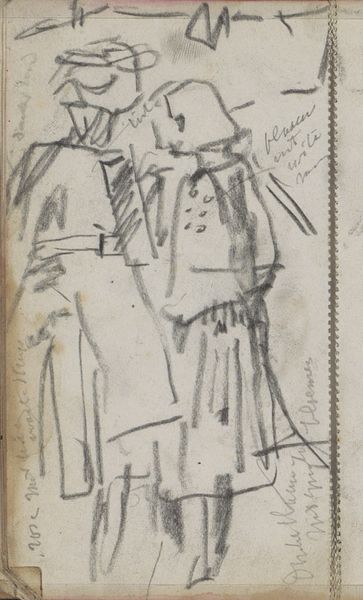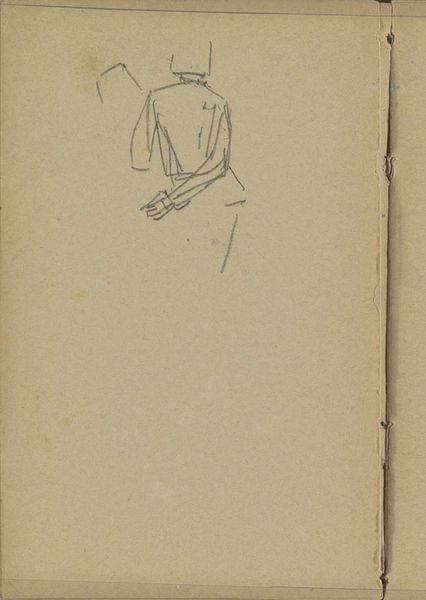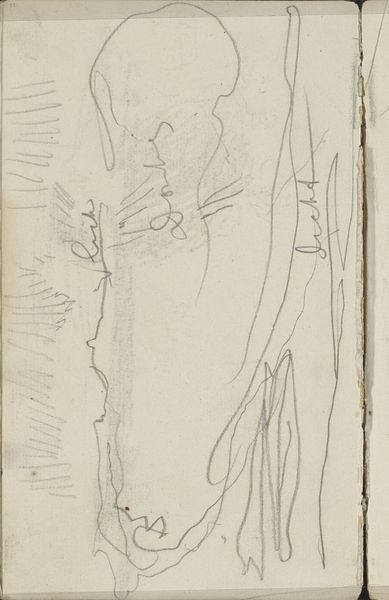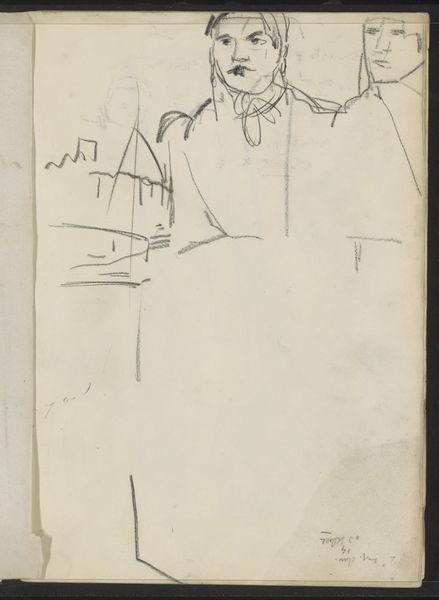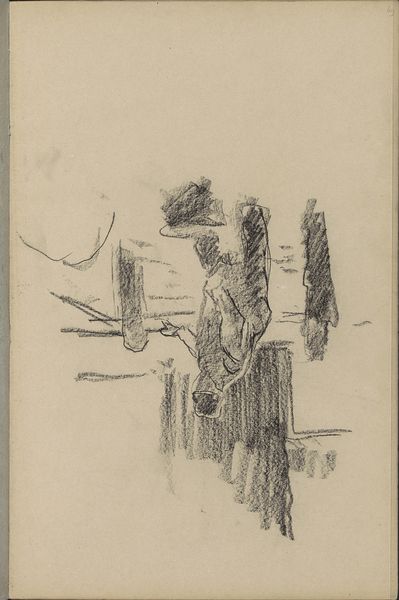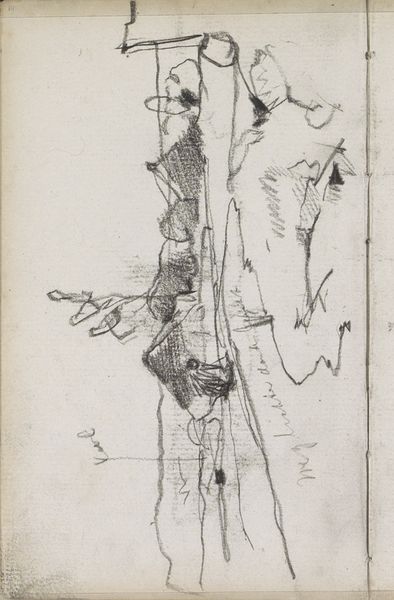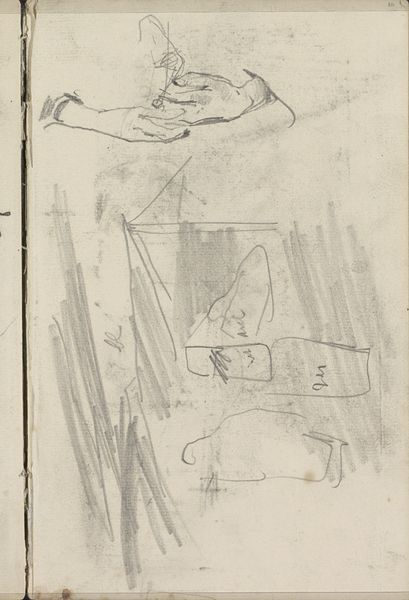
drawing, paper, pencil
#
portrait
#
drawing
#
impressionism
#
pencil sketch
#
paper
#
pencil
#
realism
Copyright: Rijks Museum: Open Domain
Curator: My first impression of "Zittende Vrouw," or "Seated Woman," a pencil drawing on paper by George Hendrik Breitner, is its remarkable simplicity. Done sometime between 1881 and 1883, there's a stark vulnerability about the image. What captures you initially? Editor: Stark, yes, but also fragmented. It feels like glimpsing a half-remembered dream. The subject isn’t fully formed, like a ghost trying to materialize, especially the figure to her left. Do you think that adds to that sense of vulnerability? Curator: Absolutely. Breitner’s quick, impressionistic strokes leave so much unsaid, compelling the viewer to fill in the gaps, emotionally and visually. The way the woman's form is only suggested speaks volumes about absence, and the sketch remains raw. This rawness resonates with Realism, but with that unique painterly approach Breitner developed in his Amsterdam period. The figure almost dissolves back into the paper. There is even a sketched pole with leaf shaped drawing that reinforces how unifinished this portrait sketch is. Editor: And those hatched lines creating shadow—they're not just about volume, but feeling. Look at how the density shifts around her hands, her sleeves. Like the pressure of reality weighing her down in this scene. Perhaps the figure in the background too alludes to thoughts occupying the figure’s mind at this time, or perhaps it is someone else that is physically co-present with the seated figure. Curator: Indeed. One can feel a premonition there; maybe a silent scream; definitely, some struggle that he, and subsequently we, have the luck or the curse to be witness to. But that is not by chance, for in his mature Amsterdam years Breitner was quite obsessed with photography. We may see some sort of photographical visuality at work here that he may also tried in his other sketches and works. Editor: It's haunting how the essence of her emotional state is captured. In her silence and stillness. But it makes you want to write about her or draw her, the subject's gaze really stays in one's psyche and that makes it compelling. Curator: Precisely! It captures how visual traces allow memory to live and affect how we think and feel across eras. It makes us see with a renewed attention on human nature itself, like only artworks that leave their time and place in history can do. Editor: Indeed. It gives us permission to dwell in ambiguity and ponder the stories unspoken that is left for interpretation.
Comments
No comments
Be the first to comment and join the conversation on the ultimate creative platform.
